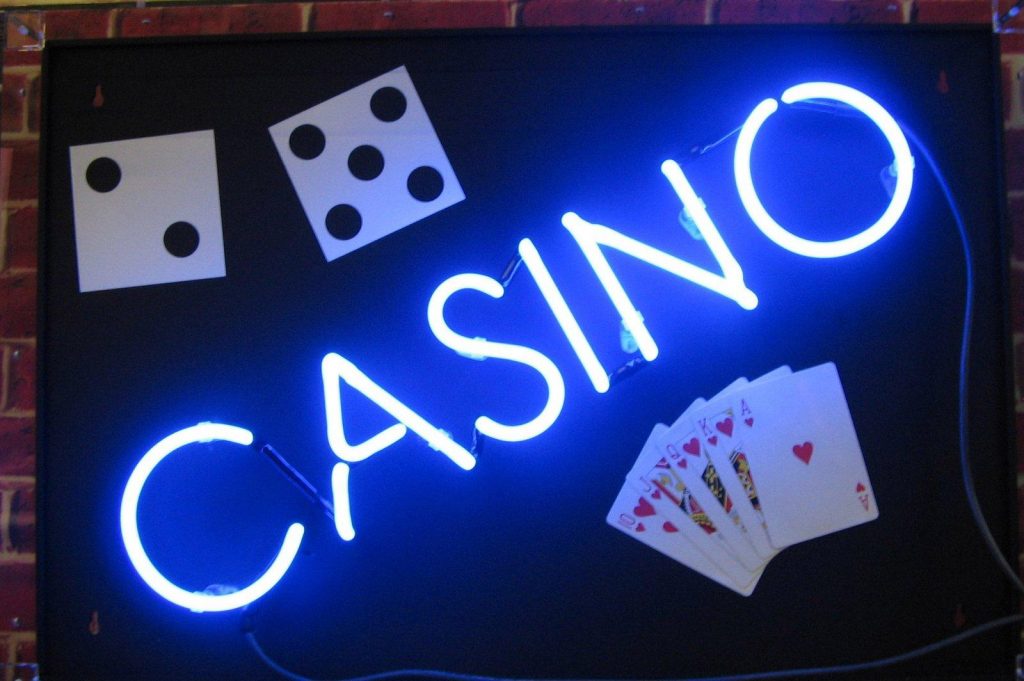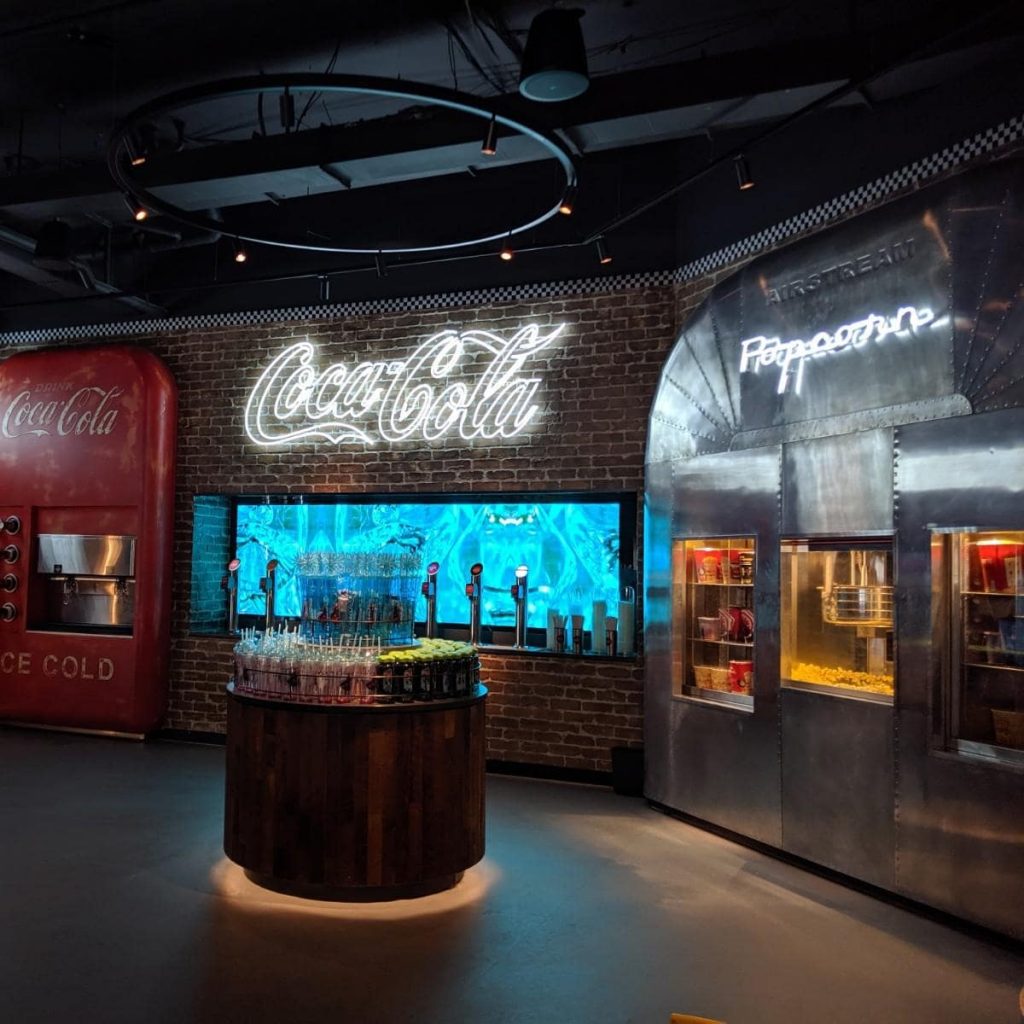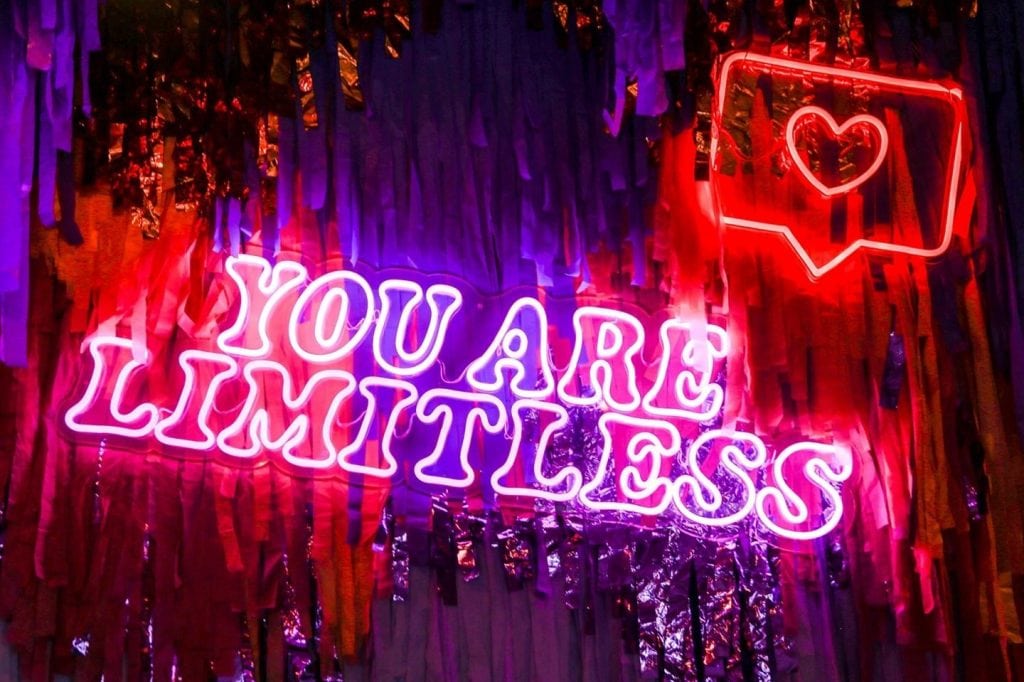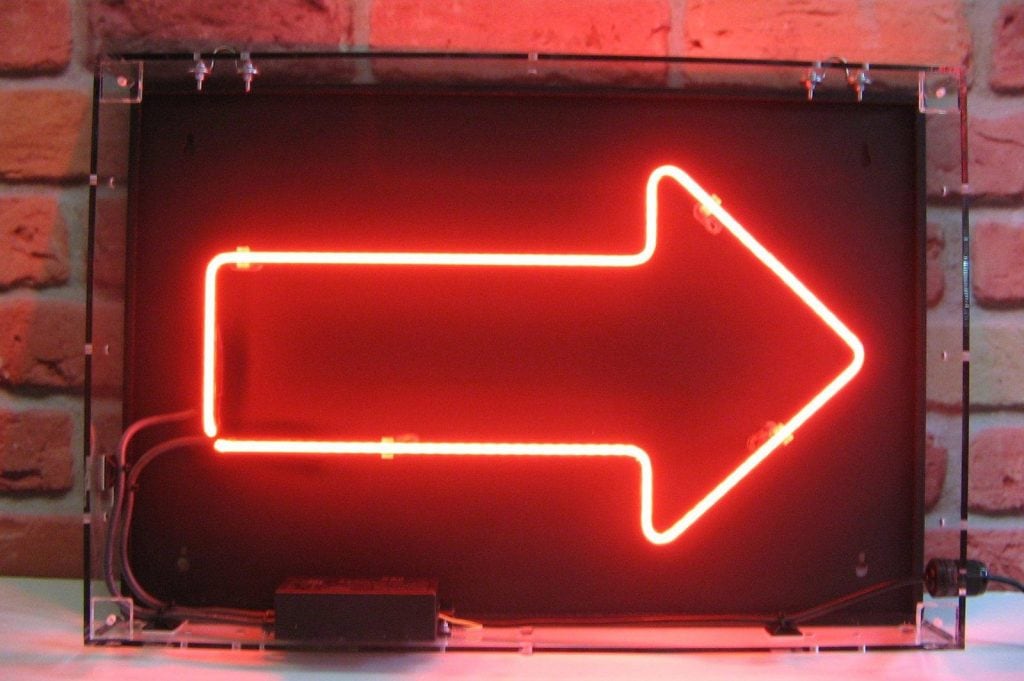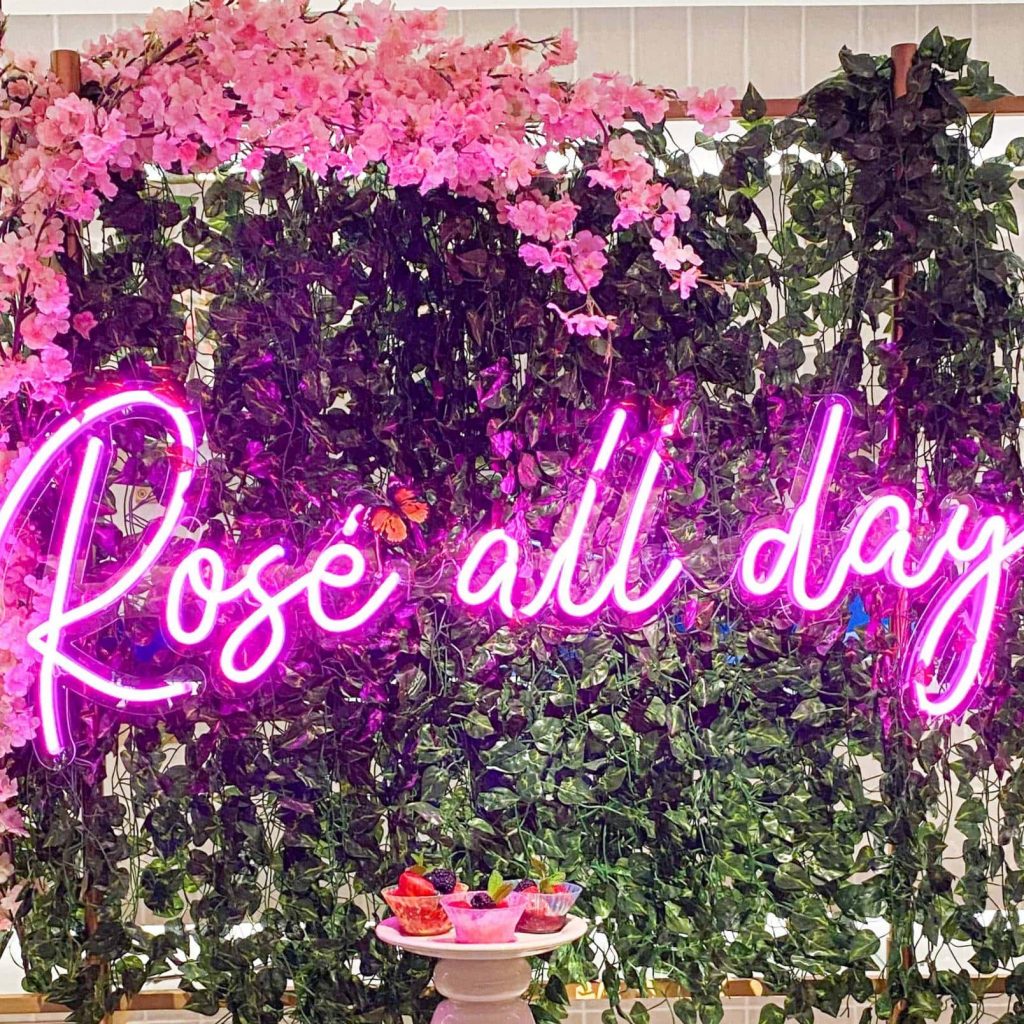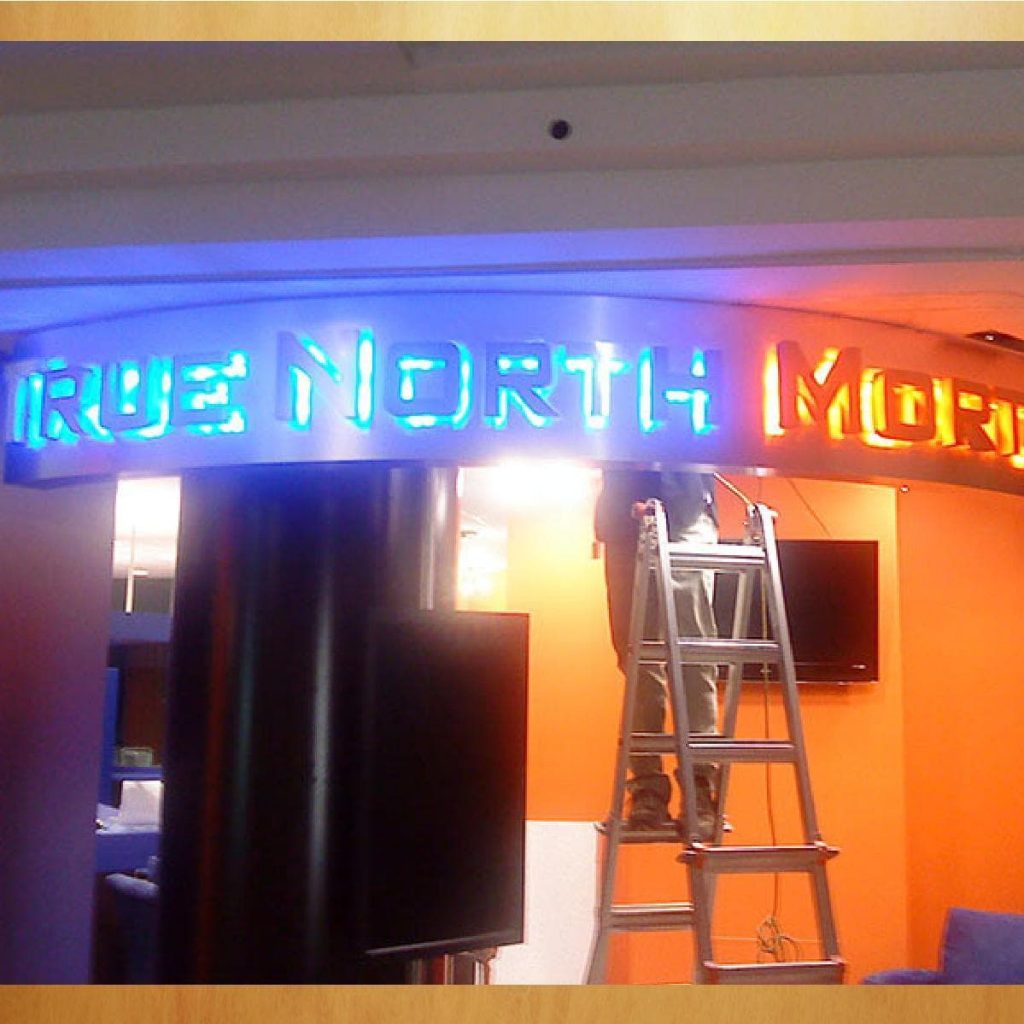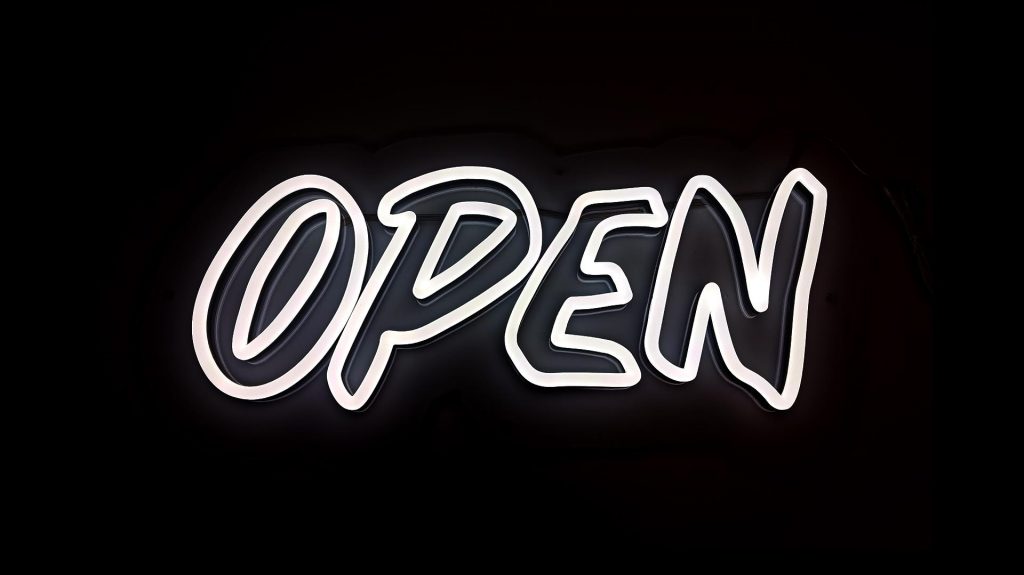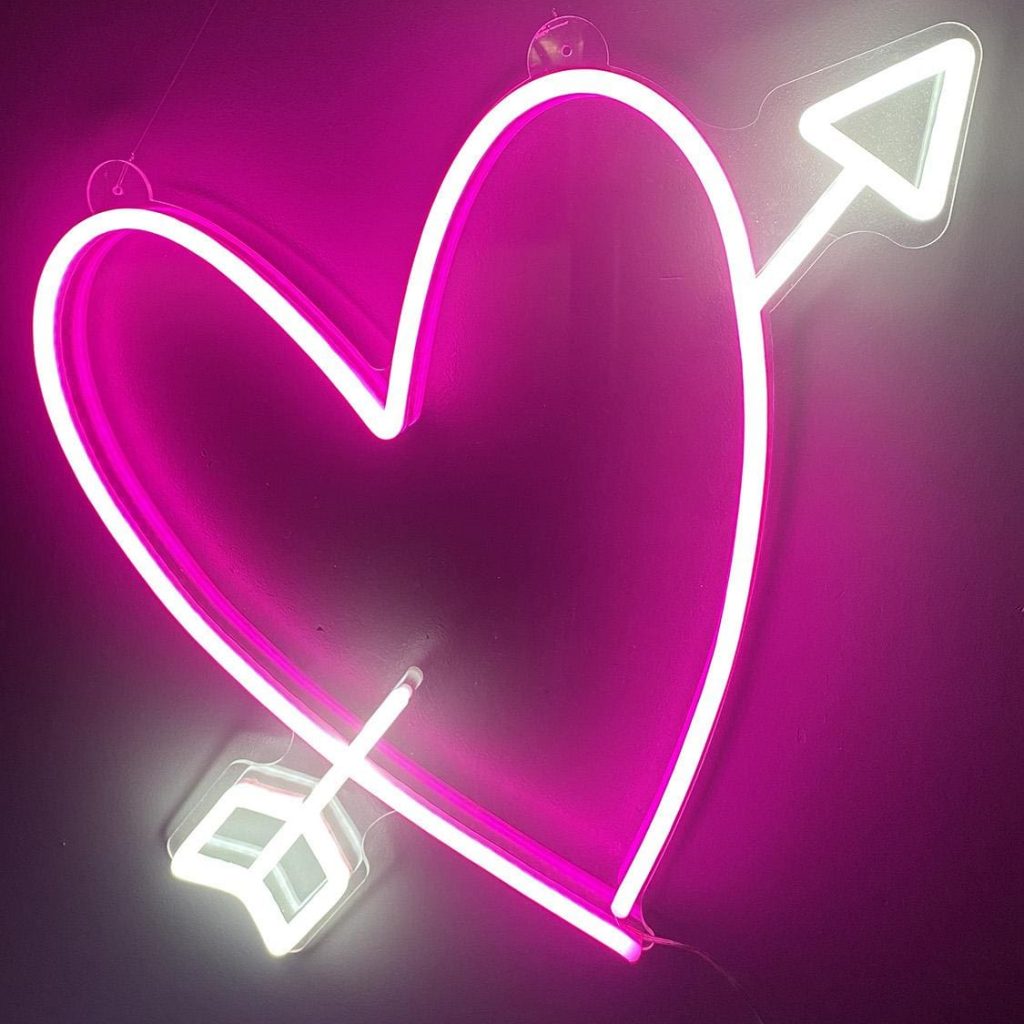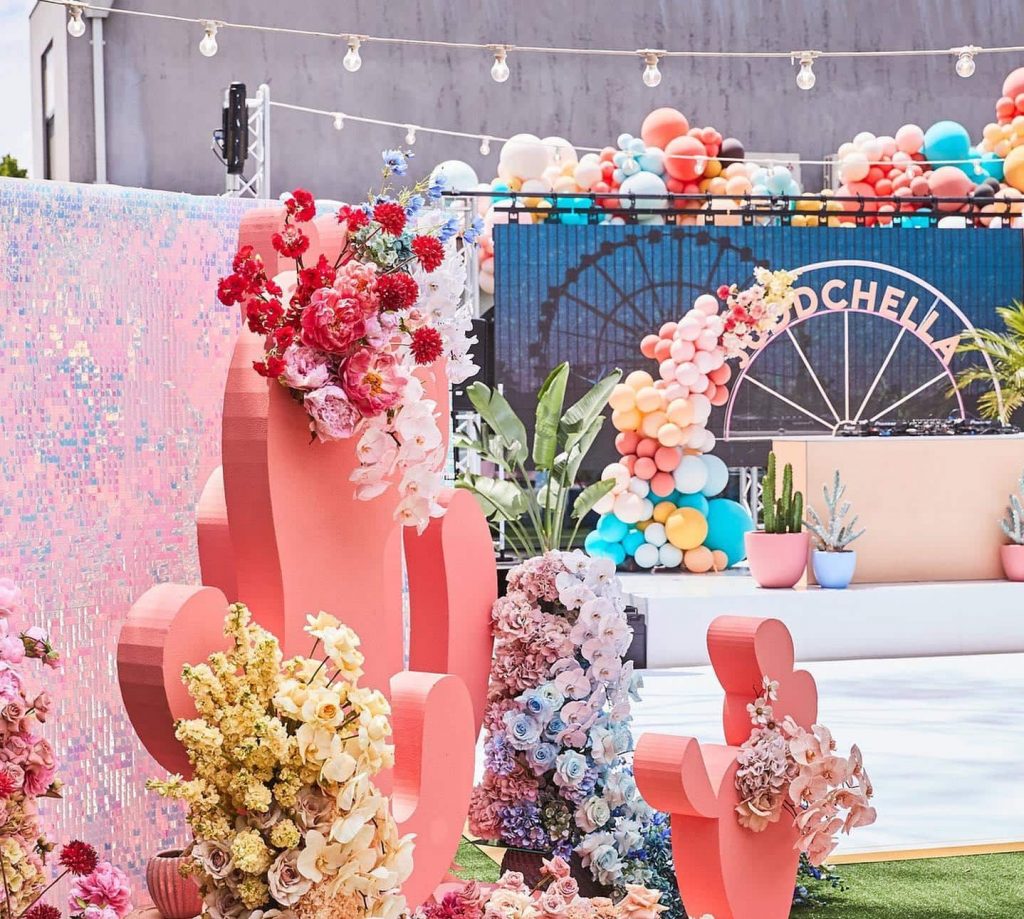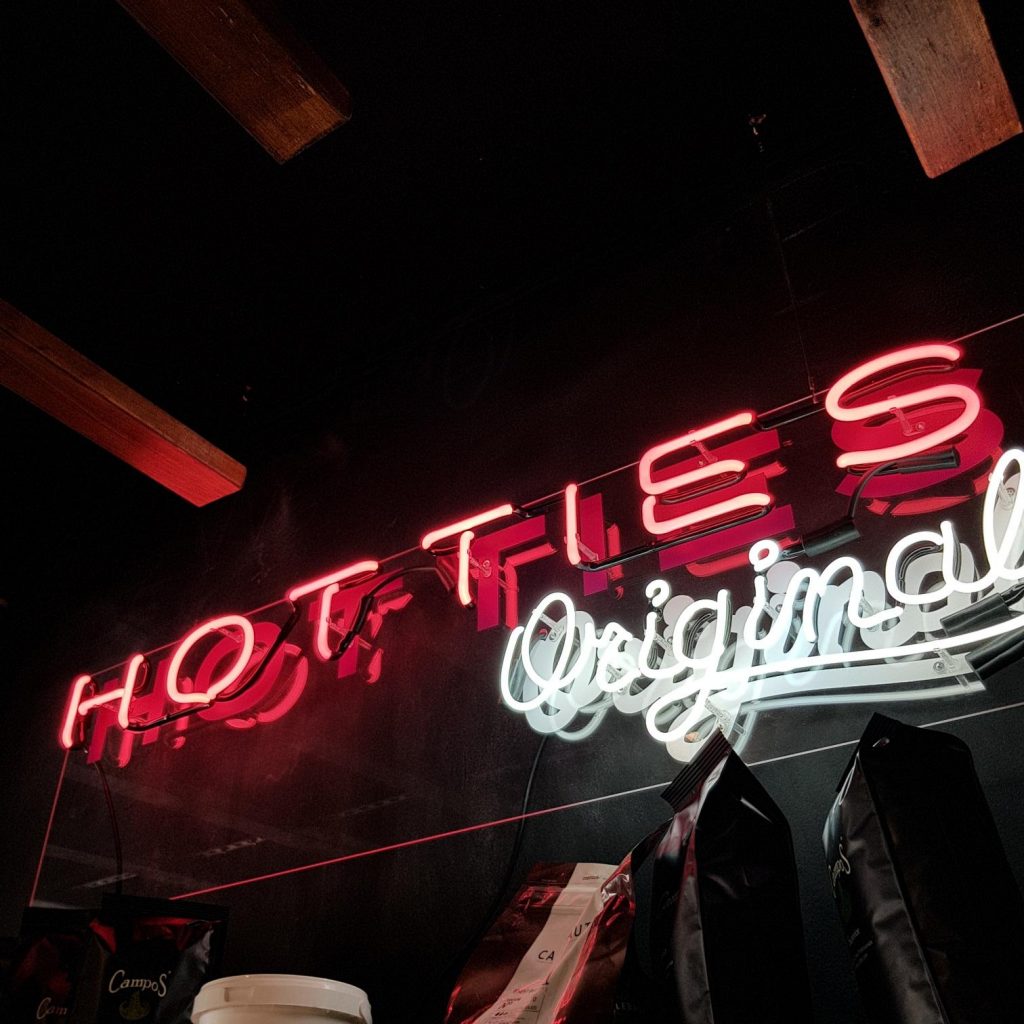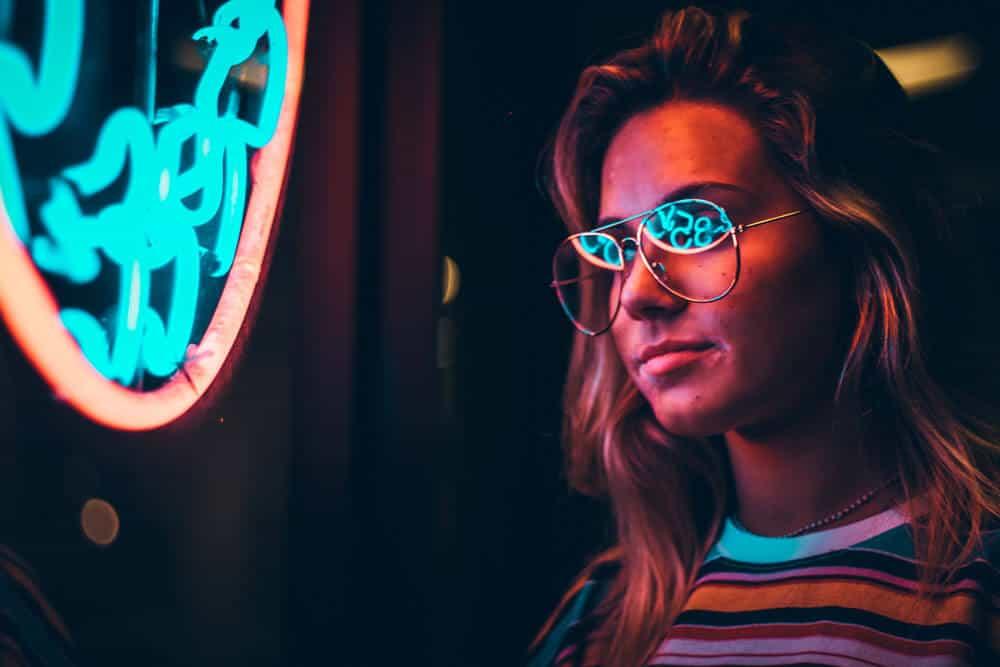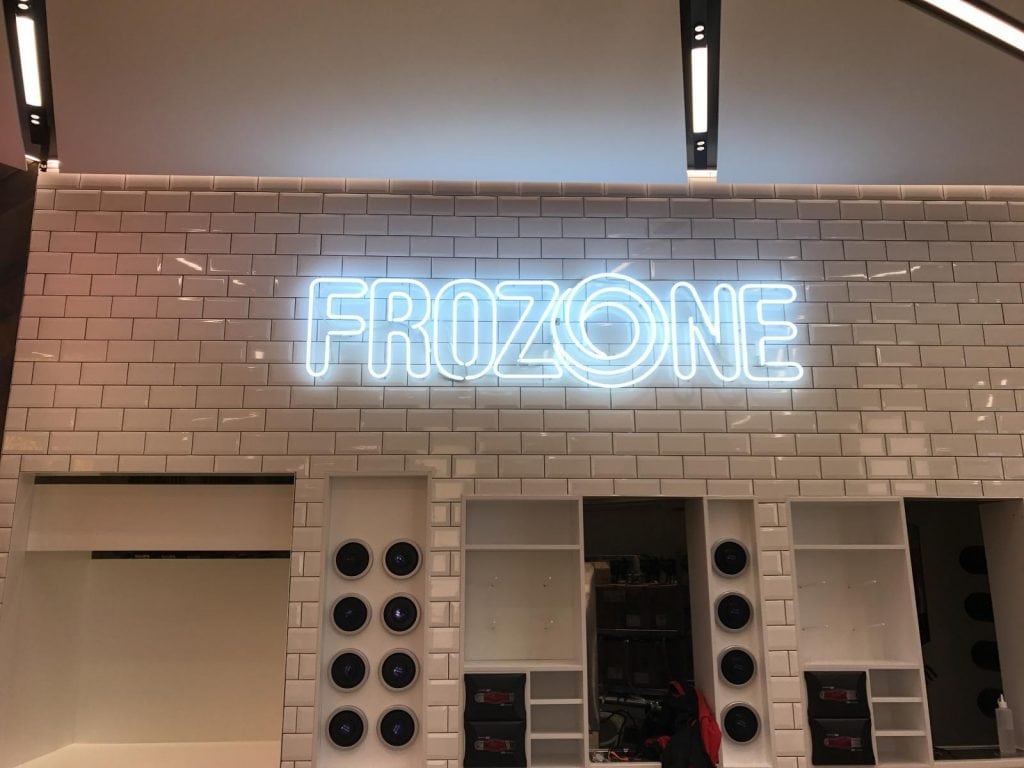The eyes are one of the most precious senses we have, thus protecting them is crucial. There is a growing need to be cognisant of the effects that various electronic devices and artificial lighting have on our eyes. Even if LED neon signs have found widespread use in recent years, it's crucial to know if they pose any threat to human eyes.
Light-emitting diodes (LEDs), the light sources used in LED neon signs, create light with minimal waste in the form of electromagnetic radiation and heat. Therefore, they are not harmful to human eyes and are not known to cause eye damage.
However, while approaching LED neon signs up close, it's vital to protect your eyes from the intense light. No matter the source, prolonged exposure to bright light can produce eyestrain, blurred vision, headaches, and other discomforting side effects. Those whose jobs require them to regularly stare at LED neon signs or other bright screens are at a higher risk.
Find out which one poses the greatest threat to your eyesight.
What Types of Lights Harm Our Eyes?
Light is crucial because it allows us to view our surroundings and carry on with our everyday activities. But if we don't use or perceive certain kinds of light appropriately, we can do serious damage to our eyes. To keep our eyes in excellent condition, we need to know what kinds of lights can cause damage, and what we can do to avoid them.
UV Light
Light in the ultraviolet (UV) spectrum is harmful to the eye since it penetrates the cornea and retina undetected. Cataracts, macular degeneration, and other eye issues can become more likely with prolonged exposure to UV light.
Blue Light
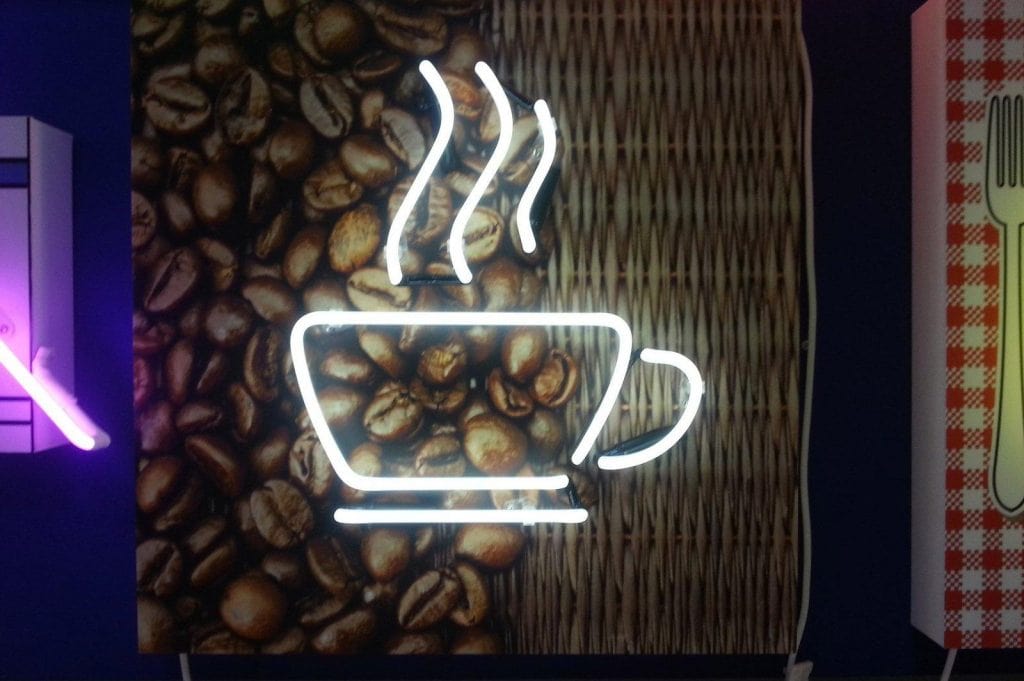
Electronic equipment such as cellphones, computers, and LED lights create a form of visible light called blue light, which has a high energy level. Blue light has been linked to digital eye strain, headaches, and other symptoms if exposed to it for too long. It can also throw off your body's internal clock, making it difficult to fall or stay asleep.
Bright Lights
Eye tiredness, headaches, and other symptoms are possible reactions to prolonged exposure to bright lights, especially LED lights. This is especially true for those whose jobs require them to spend long hours staring at LED panels or other sources of intense illumination.
Flicker Lights
A person with photosensitive epilepsy may have a seizure if exposed to flickering lights, which can also induce eye strain and headaches. Avoid employing lights that flicker or strobe and instead choose for fixtures that provide a steady stream of illumination.
Glare
Light pollution is an annoyance and a visual impairment. This can cause a variety of unpleasant side effects, including fatigue and headaches.
Light with a colour temperature between 2000 and 3500 Kelvin and a wavelength of more than 500 nanometers has been shown to be risk-free. This means that our eyes are vulnerable to damage from blue light in the visible spectrum. However, blue light is typically classified as either short-wave or long-wave.
The range of short-wave blue light, from 415 nm to 455 nm, has been linked to possible eye discomfort. In 2018, researchers looked at the effects of short-wave blue light and found that it could cause dry eyes and disturb sleep patterns. However, longer-wavelength forms of blue light, between 455 and 495 nm, pose no threat to human eyes. Lights with a longer wavelength of blue light have been demonstrated to aid with sleep regulation.
Cold White LED vs Warm White LED
LEDs with a "warm white" colour temperature produce a light with a temperature of about 3000K. The most authentic looking light is the warm white (old traditional light bulb). It provides a more relaxed illumination that works well in most domestic settings.
In contrast, the colour temperature produced by a cool white LED is around 5000 to 6000 Kelvin (K). The kitchen and the bathroom both benefit from the use of cool-white LED lighting.
Most modern LED lights produce their white light from a blue LED doped with phosphor. A 470 nm LED light source does not emit any potentially dangerous wavelengths of light, including UVA, UVB, or UVC.
How Do Our Eyes Process Visible Light?
Your eyes, with their many specialised parts, function as a single unit to allow you to see.
The cornea, the transparent front layer of the eye, is the first layer through which light travels. The cornea acts like a dome and refracts light, allowing the eye to focus. The pupil is the aperture in the eye that allows some of this light to enter. The amount of light entering the eye is regulated by a slit called the iris (the coloured component of the eye).
The lens, a transparent portion of the eye's interior, then lets the light through. The lens collaborates with the cornea to direct light where it's needed most, the retina.
An eye's retina is a light-sensitive layer of tissue located in the back of the eye. Retinas include photoreceptor cells, which are specialised for seeing light. When light is detected, electrical signals are triggered by the photoreceptors. These impulses are transmitted to the brain via rods and cones via nerves.
The brain receives these electrical signals after they have travelled from the retina down the optic nerve. Next, the brain interprets these signals as what you're actually seeing.
Is There a Safe Neon LED Color To Use?
Considerations such as aesthetics and the effect on the eyes are important when choosing a hue for LED neon signs. LED neon signs can be made in a wide range of colours, and the one that works best will be determined by the setting in which it will be displayed.
Warm colours like red, yellow, and orange are easier on the eyes than cooler hues like blue and green. This is because the human eye is more adapted to warm hues, which have longer wavelengths and lower frequencies. However, because of their shorter wavelengths and higher frequencies, cool colours can be more strident and uncomfortable to the eye.
The effect of a colour on the eyes is modified by the color's saturation level. When viewed over extended periods of time, brighter and more intense colours can induce eye strain and pain. For this reason, you should pick a hue that is not only pleasant to the eye but also fits well with the overall design.
To that end, it's often recommended to use warm hues like red and yellow in the home or other spaces where unwinding is the main goal, as they help to create a welcoming and comfortable environment. However, bedrooms and spas can benefit from the calming effect of blues and greens, therefore these hues are often used in these settings.
It's also crucial to think about how the LED neon sign will blend in with the existing lighting scheme. It's advisable to pick a warmer, less intense colour for the LED neon sign if the surrounding environment is already quite bright and intense.
There are a number of variables that must be taken into account when deciding which hue LED neon signs should be made in. Choosing a hue that is attractive to the eye and easy on the eyes is a vital consideration.
How To Protect Eyes Against UV Rays
We can't see ultraviolet (UV) rays, yet they're harmful to our eyes and skin anyway. Long-term effects include cataracts and age-related macular degeneration, but short-term burns are also possible. To keep our eyes in excellent condition and prevent any permanent damage, we must shield them from the sun's ultraviolet (UV) radiation.
Take a Short Break for Your Eyes
Light overexposure can be avoided easily by reducing total time spent in the sun. Remember to take frequent pauses away from the screen. Remember the 20-20-20 rule as well.
If you want to avoid eye strain, it's recommended that you glance away from the screen every 20 minutes for at least 20 seconds. Using this method can reduce the strain on your eyes. In addition, it serves as a constant reminder to limit time spent in direct sunlight.
Use Computer Glasses
If you spend a lot of time staring at displays, you should get yourself a good set of computer glasses. Yellow-tinted lenses are used in computer eyewear to filter off UV rays.
Glasses can be ordered to fit your specific working distance. Then, it might serve to ease eye strain and rest the eyes while working.
Buy Zero-Glare Lenses
Those who perform their duties at night should equip themselves with anti-reflective lenses. Vision, colour perception, and peripheral vision all suffer in the dark.
However, anti-reflective lenses can make nighttime driving far less stressful and more pleasant. The lenses improve visibility and shield the wearer's eyes from potentially harmful glare. If you're experiencing tired eyes, this may help.
Supplements
Medications exist that can aid in the prevention of eye injury. Supplements including vitamins C and E as well as zinc, lutein, and zeaxanthin are highly recommended by medical professionals.
This premixed eye vitamin supplement reduced the risk of eye illness by 25% in those who took it regularly.
Use UV-protected Windows
If you spend a lot of time in your automobile or in a building with windows, you may want to invest in UV-protected windows to lessen the quantity of harmful UV rays that enter your eyes.
It's crucial to remember that surfaces like water, sand, and snow can reflect UV radiation, so take precautions when you're out in the sun.
Impact of LED on our Eyes
LED lights' rising popularity can be attributed to its long lifespan, low energy consumption, and wide range of possible applications. LEDs are utilised for a variety of purposes, from indoor to outdoor lighting to digital displays to general illumination. But there are many who worry about the long-term effects of LED lights on human eyes.
Short-term exposure to LED lighting has been linked to visual symptoms like weariness and headaches. This is due to the fact that LEDs emit more blue light than incandescent bulbs. Shorter than other colours in the visible light spectrum and carrying more energy, blue light is known to disrupt our circadian cycle and lead to sleeplessness and other health issues.
Age-related macular degeneration, which affects the retina at the back of the eye, can be exacerbated by prolonged exposure to LED lights. Research has revealed that prolonged exposure to blue light can cause retinal damage and increase the likelihood of developing cataracts, both of which can cause permanent vision impairment.
There are a number of things we may do to lessen the strain on our eyes caused by LEDs. For instance:
- Limit your exposure to blue light by limiting your use of electronic devices including computers, smartphones, and televisions.
- Blue light filters and night mode settings on some electronic devices help mitigate the harmful effects of screen time by limiting exposure to the colour spectrum of the blue end of the visible light spectrum.
- While using electronic gadgets, it is recommended to use blue light blocking glasses to lessen the amount of blue light entering the eyes.
- Screen brightness should be reduced, especially while using electronic devices in dim lighting.
- Especially when working for long periods of time, it's important to take regular breaks from using electronic gadgets.
- Instead of using cool-toned LED lights, you should go with warm-toned ones because they emit less blue light. If you want to save your eyes some stress, warm-colored LED lighting is the way to go for your home and office.
There may be both immediate and long-term effects on our eyes from glare caused by LED lighting. Reducing one's exposure to blue light through measures including limiting one's time in front of a screen, employing blue light filters, or lowering the brightness of one's display can help mitigate this effect. Using warm-colored LED lights and taking frequent breaks are two other ways to shield our eyes from the dangers of prolonged exposure to blue light.
Conclusion
The light emitted by LED neon signs is safe for human eyes, but prolonged exposure to such a bright light source can cause eyestrain, blurred vision, headaches, and other unpleasant symptoms.
It is important to protect your eyes from the bright light emitted by light-emitting diodes (LEDs), but it is not known to cause damage to the eyes. Discover which kinds of lights are the most dangerous to your eyes.
Cataracts, macular degeneration, and other vision problems can all be caused by ultraviolet (UV) light, which can penetrate the cornea and retina unnoticed. Also, like flickering lights, blue light can lead to tired eyes and headaches.
White light in modern LED bulbs comes from a blue LED that has been doped with phosphor, and these bulbs do not give off any potentially harmful ultraviolet (UV) radiation. The retina, located at the back of the eye, is a light-sensitive layer of tissue.
The rods and cones in your eyes are photoreceptors, and when they sense light, they send an electrical signal to your brain. Considering aesthetics and the effect on the eyes is crucial when picking a safe neon LED colour. Red, yellow, and orange are more pleasing to the eye than other, cooler colours.
Think about how the LED neon sign will mesh with the current setup. The colour of an LED neon sign is important, and it needs to be one that people will find pleasing to the eye. Take frequent breaks away from the computer to rest your eyes, wear computer glasses, purchase zero-glare lenses, and install UV-protected windows to shield your eyes from harmful UV rays.
Vitamin C and E, zinc, lutein, and zeaxanthin supplements can also protect against eye damage.

There are concerns about the long-term effects of LED lights on human eyes, despite their growing popularity due to their long lifespan, low energy consumption, and wide range of applications.
Blue light has been shown to damage the retina and increase the risk of cataracts, both of which can lead to irreversible vision loss if exposed to them over time. It's important to protect our eyes from the sun's rays when we go outside.
You can reduce your exposure to blue light by wearing blue-blocking glasses, lowering the brightness of your screen, taking frequent breaks, and replacing your fluorescent lighting with warm-colored LEDs. Limiting exposure to the blue end of the visible light spectrum, which is emitted primarily by electronic devices, can help mitigate the negative effects of screen time.
Content Summary
- Even if LED neon signs have found widespread use in recent years, it's crucial to know if they pose any threat to human eyes.
- However, while approaching LED neon signs up close, it's vital to protect your eyes from the intense light.
- Find out which one poses the greatest threat to your eyesight.
- To keep our eyes in excellent condition, we need to know what kinds of lights can cause damage, and what we can do to avoid them.
- Cataracts, macular degeneration, and other eye issues can become more likely with prolonged exposure to UV light.
- Eye tiredness, headaches, and other symptoms are possible reactions to prolonged exposure to bright lights, especially LED lights.
- Avoid employing lights that flicker or strobe and instead choose for fixtures that provide a steady stream of illumination.
- Light with a colour temperature between 2000 and 3500 Kelvin and a wavelength of more than 500 nanometers has been shown to be risk-free.
- This means that our eyes are vulnerable to damage from blue light in the visible spectrum.
- Lights with a longer wavelength of blue light have been demonstrated to aid with sleep regulation.
- The kitchen and the bathroom both benefit from the use of cool-white LED lighting.
- An eye's retina is a light-sensitive layer of tissue located in the back of the eye.
- Considerations such as aesthetics and the effect on the eyes are important when choosing a hue for LED neon signs.
- It's also crucial to think about how the LED neon sign will blend in with the existing lighting scheme.
- It's advisable to pick a warmer, less intense colour for the LED neon sign if the surrounding environment is already quite bright and intense.
- There are a number of variables that must be taken into account when deciding which hue LED neon signs should be made in.
- Choosing a hue that is attractive to the eye and easy on the eyes is a vital consideration.
- Light overexposure can be avoided easily by reducing total time spent in the sun.
- Remember to take frequent pauses away from the screen.
- Using this method can reduce the strain on your eyes.
- Yellow-tinted lenses are used in computer eyewear to filter off UV rays.
- Those who perform their duties at night should equip themselves with anti-reflective lenses.
- However, anti-reflective lenses can make nighttime driving far less stressful and more pleasant.
- It's crucial to remember that surfaces like water, sand, and snow can reflect UV radiation, so take precautions when you're out in the sun.
- But there are many who worry about the long-term effects of LED lights on human eyes.
- Short-term exposure to LED lighting has been linked to visual symptoms like weariness and headaches.
- Age-related macular degeneration, which affects the retina at the back of the eye, can be exacerbated by prolonged exposure to LED lights.
- Research has revealed that prolonged exposure to blue light can cause retinal damage and increase the likelihood of developing cataracts, both of which can cause permanent vision impairment.
- There are a number of things we may do to lessen the strain on our eyes caused by LEDs.
- Limit your exposure to blue light by limiting your use of electronic devices including computers, smartphones, and televisions.
- While using electronic gadgets, it is recommended to use blue light blocking glasses to lessen the amount of blue light entering the eyes.
- If you want to save your eyes some stress, warm-colored LED lighting is the way to go for your home and office.
- Using warm-colored LED lights and taking frequent breaks are two other ways to shield our eyes from the dangers of prolonged exposure to blue light.
FAQs About LED Neon Signs
While the average lifespan of a neon sign is eight to fifteen years, many of them last much longer than that. A sign's lifespan can be shortened by leaving it on for extended periods of time, and it also increases the risk of overheating and electrical surge damage
Neon signs, which were common from the 1920s to the 1960s and again in the 1980s, require them to create the bright, eye-catching displays of colour that are their hallmark.
The neon glass tubes in the metal conduits are linked together by high-voltage electrical wires. When temperatures get too high, the wires powering the sign can melt, rendering it useless in whole or in part.
Believe it or not, no electricity is required here, despite the fact that many people think they must plug it in. When excited by either electricity or ultraviolet light, gas molecules release electrons, causing the gas to glow.
Neon signs are stunning to behold, but they pose a danger if they aren't regularly serviced. Injury from shattered glass, electric shock, or a fire hazard are all examples of the dangers that could arise.

